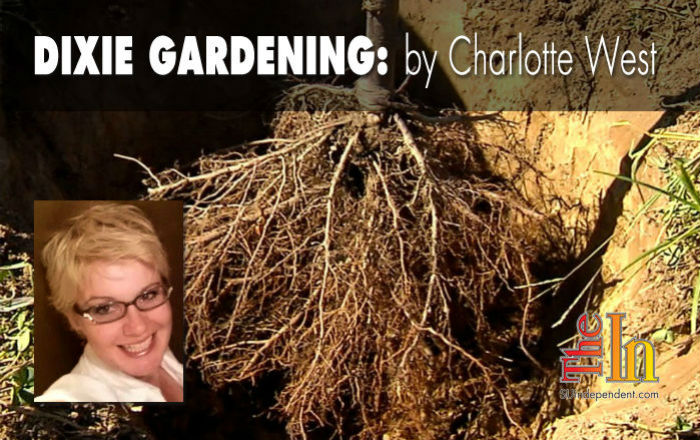 Written by Charlotte West
Written by Charlotte WestIts not too late to jump on the bare root train. Bare roots are usually sold in late winter till early Spring. Most deciduous plants are sold as such; like fruit trees, shade trees, roses and many flowering shrubs. Bare root means just that. They are sold bare (without any clothing), void of soil around their roots.
So why chose bare roots over traditional potted plants? A big reason is cost, as bare roots are about 40-70 percent cheaper than potted plants. So if you are planting several fruit trees or shade trees, this can save a bundle of money. The other reason is they have better adaptation to the soil than traditional potted plants and establish more quickly and this leads to much hardier plants. Another reason to keep in mind is that they are usually only trying to adapt to one kind of soil – the soil you are planting in rather than the soil that may come in. Traditionally you do not even have to amend your existing soil for bare roots. Planting in two different soils can lead to adaption problems because it becomes hard to gauge how much is enough water as different soils each hold water differently.
When selecting bare roots try to select plants that have long stems that are fresh looking, with well overall formed roots. Do not choose any damaged bare root plant and do not choose extremely dry plants. And make sure to avoid those that have leafed out. Always plant as soon as possible after purchase. It is best to soak Bare Roots in a bucket of water for at least four hours. I like to soak them over night. Makie sure to cut away any damaged part of the plant. And do not worry about planting in cooler weather, it does not hurt the plant. You actually want to do this before they bud or leaf out.
The tricky part is digging the correct hole.
Step 1. Dig the hole so that the sides taper outward this way the roots have room to spread out.
Step 2. Make the hole twice as wide as the roots of the plant.
Step 3. Roughen up the sides of the soil so root penetration is easier
Step 4. As you fill the hole firm up the soil around the base of the plant so that you give ample support. Create a well around the plant to maintain proper water retention and you are good to go. Water according to your plant type. Which usually you will find a good watering in and go out and about once a week and repeat. It is always best to check with whomever you purchased the bare roots from for more detailed watering info.
Another type of plant you may receive is a burlap ball plant, or B&B. The reason for this is there are certain types of trees and shrubs that would not survive a traditional bare root transplant. They are much more delicate and even require extra care when handling. I like to have these plants delivered by someone that has knowledge of their handling. You yourself may want to move/ transport your B&B by sliding it on to some type of canvas or tarp or create a sling to carry your plants around. Always make sure to support your plant from the bottom.
Burlap Balls have a hard time adjusting after planting because the roots are so dense. Due to slower water absorption B&B’s can be slower to grow. To aid in maintaining good water absorption you can mix an amendment such as compost into your soil. Typically one shovel amendment to every three shovels of soil is sufficient. You can dig the same style hole as for the bare roots but follow these steps when plating.
Step 1. When planting, measure carefully so that the top of the ball root is about two inches above the surrounding soil. This requires a much shallower hole to plant in.
Step 2. Once you carefully set your plants in, untie the burlap gently laying it to the sides. Do not worry as the burlap will root in time.
Step 3. Firm up the soil around the plant in a small mound so that you provide more support and you may need to go one steep further and stake your plant depending on how much wind you receive. You can create the same type of well around your plant but keep it evenly moist but not soggy.
Key things to remember: Take care when picking out your new plants and prepare you hole properly. Handle burlap balls very gently and soon you will have a well established plant that is much hardier than potted plants.




